| Wind Watch is a registered educational charity, founded in 2005. |
Construction in the Mojave Desert and Grassland
Author: | Aesthetics, California, Environment, Photos, Wildlife
Translate: FROM English | TO English
Translate: FROM English | TO English
November 14, 2011 – Photos of construction on large wind projects in the Mojave Desert and Tehachapi Mountains area, Kern County, California. Photos were taken over the period of 2010 to 2011. Photos are by Basin and Range Watch (where more photos are available) unless otherwise labeled.
Mojave Fragmentation
Friends of Mojave took these photos of industrialization of west Mojave ecosystems around the town of Mojave. This area has seen a boom in wind projects on the flat desert and slopes of the Tehachapi Range.
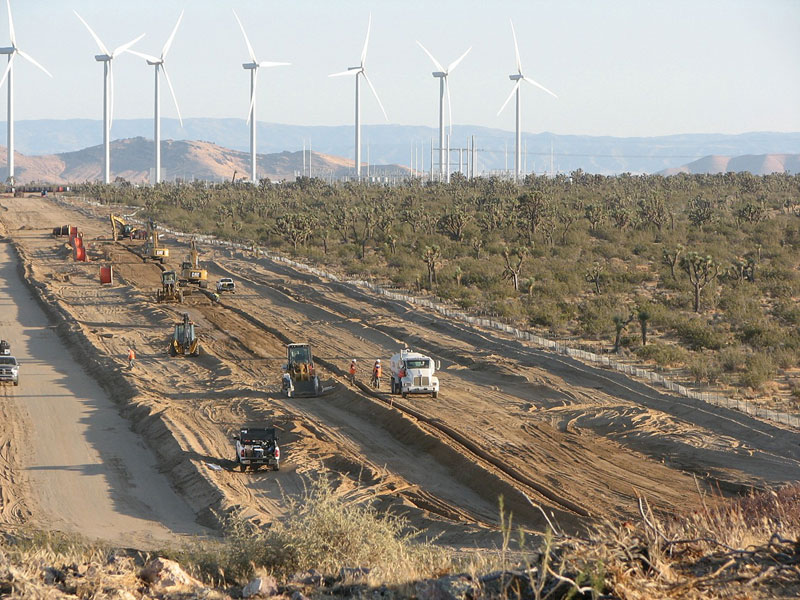
Large swaths of Joshua tree (Yucca brevifolia) woodland and creosote desert are destroyed on a wind project. (Photo: Friends of Mojave)
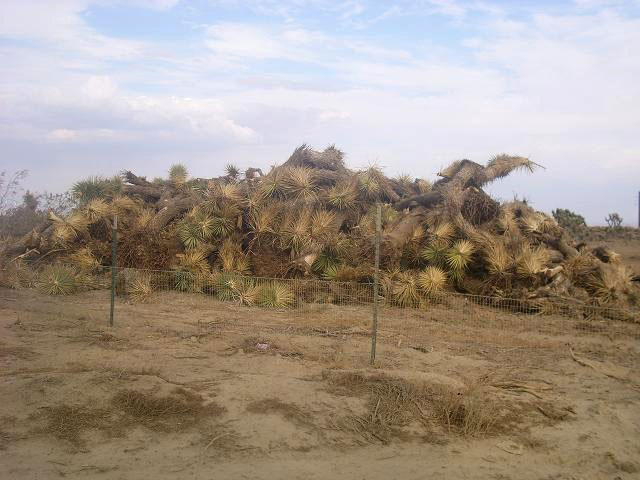
A pile of bulldozed and uprooted Joshua trees ten feet high to make way for wind turbines. (Photo: Friends of Mojave)
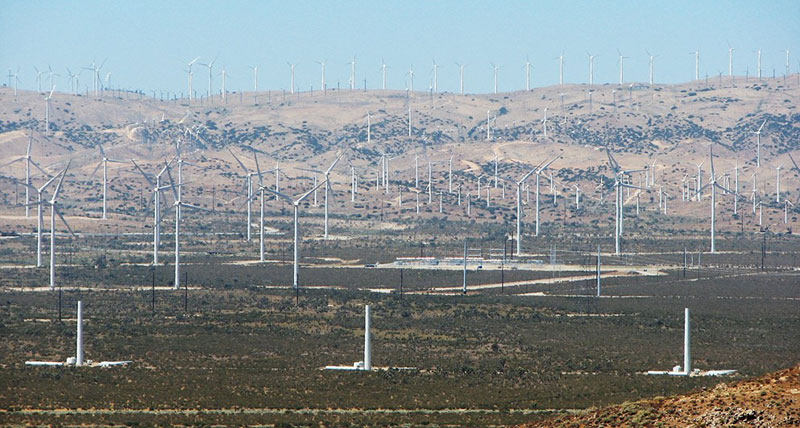
Fragmentation of a Mojave Desert ecosystem at the transition to the Tehachapi Range. (Photo: Friends of Mojave)
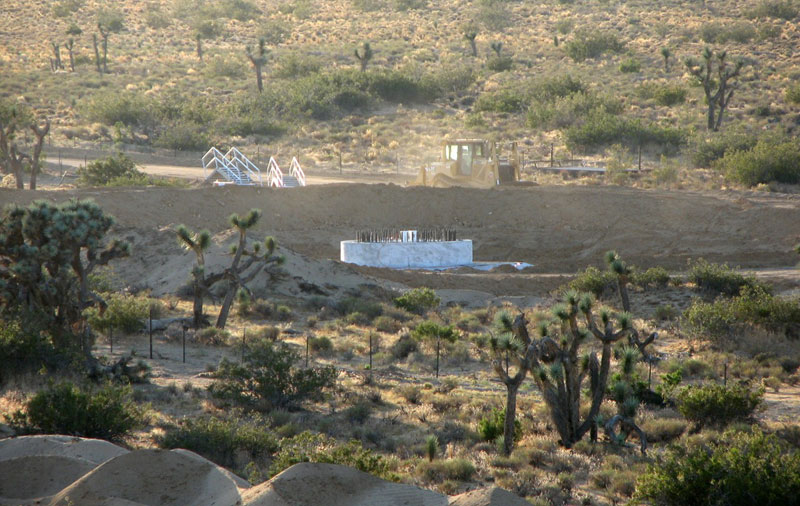
Deep hole and pad for cement foundation for a single turbine. (Photo: Friends of Mojave)
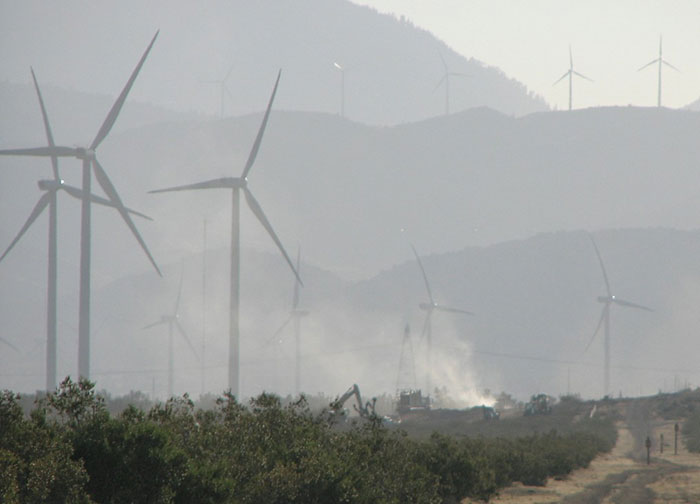
Dust clouds from construction. (Photo: Friends of Mojave)
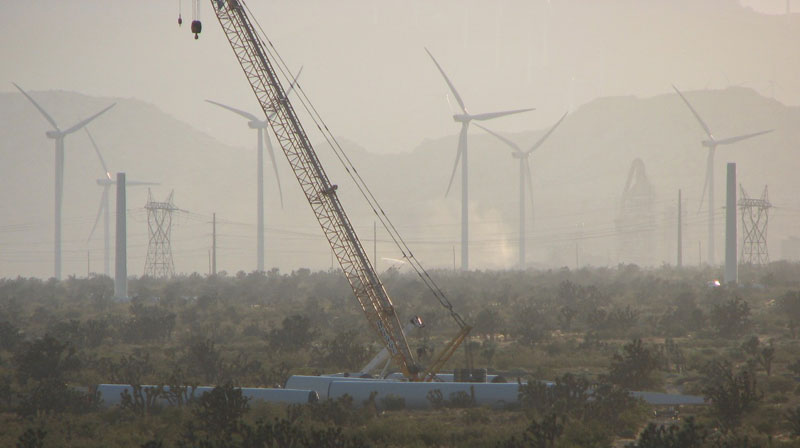
Towers and crane. (Photo: Friends of Mojave)
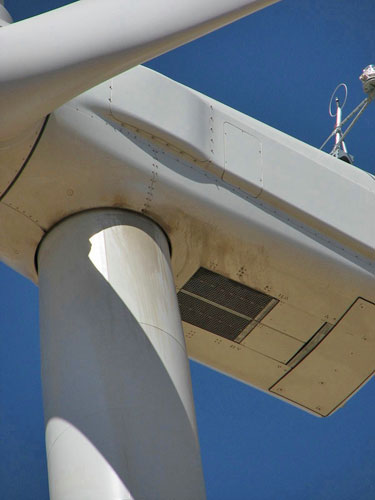
Even when new, oil leaks out of a nacelle. (Photo: Friends of Mojave)
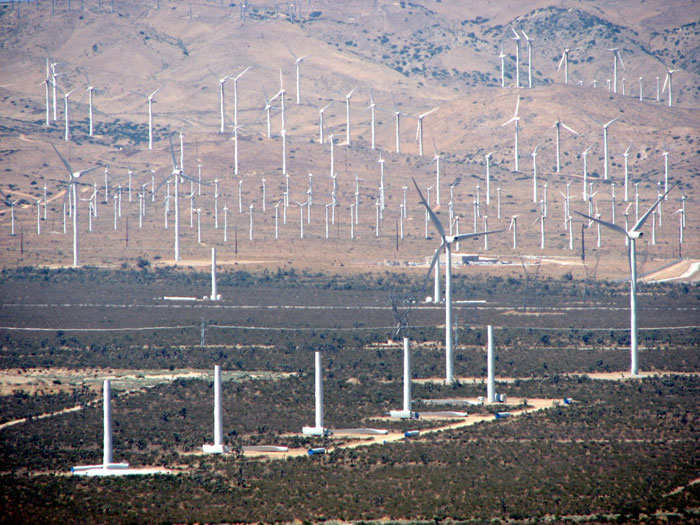
Mojave Desert scrub meets grassland of the Tehachapi Range, now divided up by roads everywhere. (Photo: Friends of Mojave)
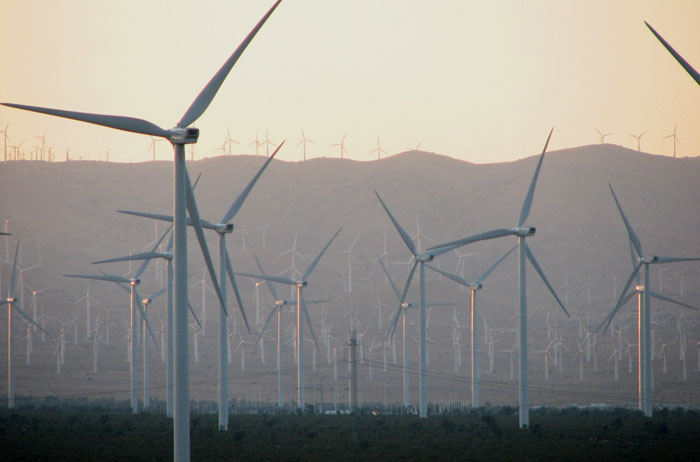
Forest of industrial Wind Turbine Generators. (Photo: Friends of Mojave)
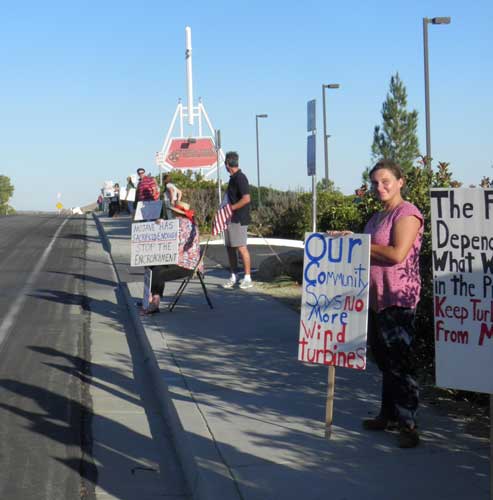
Friends of Mojave go to Bakersfield to protest the wind projects surrounding their town, asking supervisors to stop the industrialization. (Photo: Friends of Mojave)
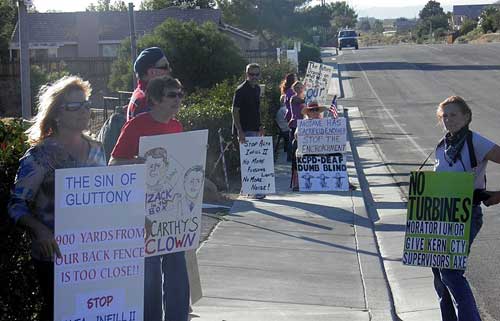
Wind protest, October 2011. (Photo: Friends of Mojave)
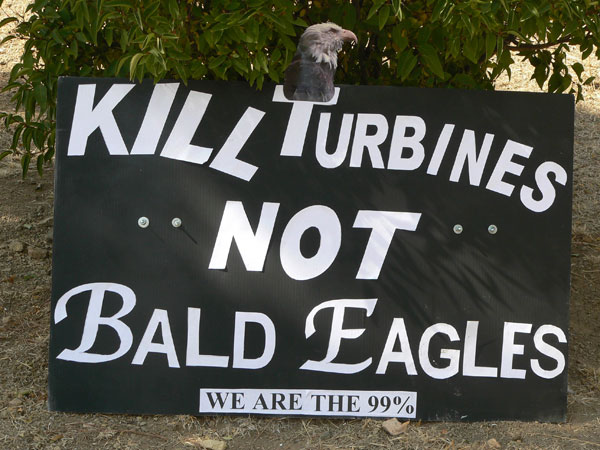
(Photo: Friends of Mojave)
Joshua Tree Destruction
Wind project under construction: new roads and pads graded into the Mojave Desert on a an overcast winter day west of the town of Mojave.
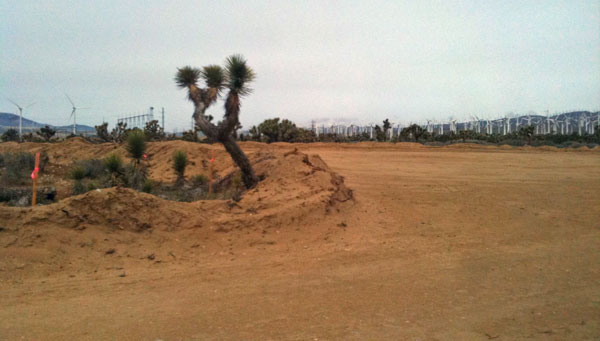
New road and pad for a single wind turbine, in the middle of a Joshua tree woodland.
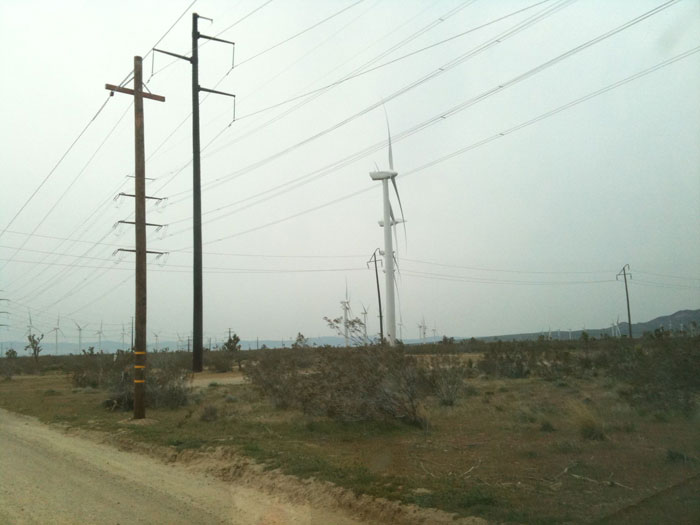
Powerlines feed off wind projects.
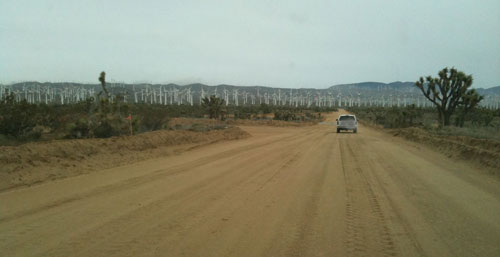
New roads in the desert must be wide to accommodate over-sized trucks.

Road grading on a wind project.
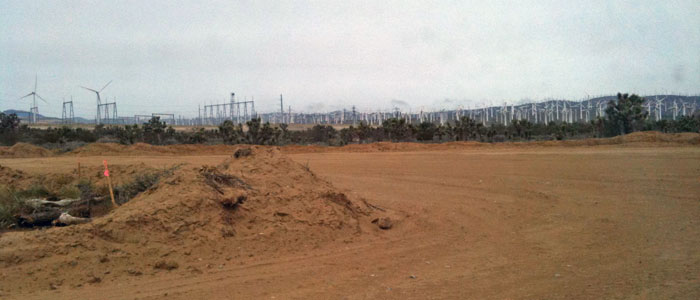
Single wind turbine pad 100 feet across.
Tehachapi Mountains Along the Pacific Crest Trail
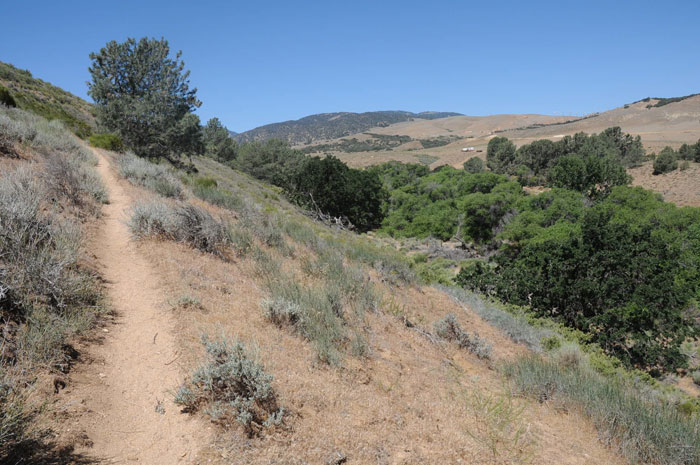
Summer 2010, the Pacific Crest Trail through the Oak Creek area of Tehachapi Mountains. The trail stretches from Mexico to Canada, and dips into lower grassland, oak woodland, and Joshua tree desert in this part of southern California. In the distant upper right hills can be seen a new road and construction machinery for a wind turbine pad.
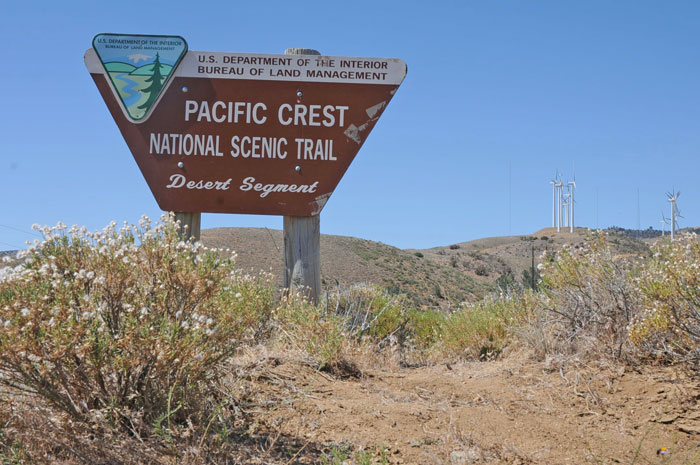
Trail sign at a trailhead.
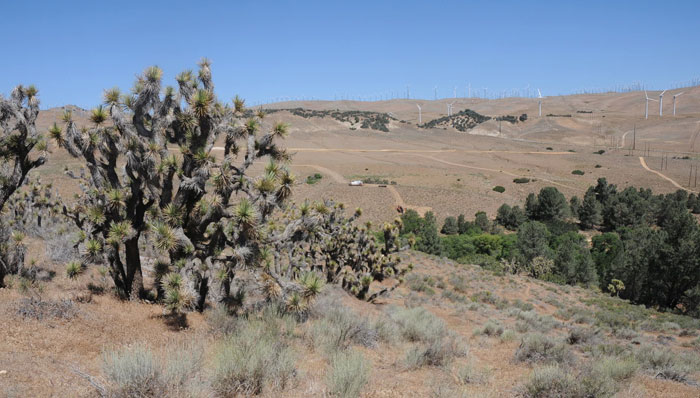
View from the trail: Joshua trees, Gray pines (Pinus sabiniana), and a stream woodland with wind projects on the grasslands.
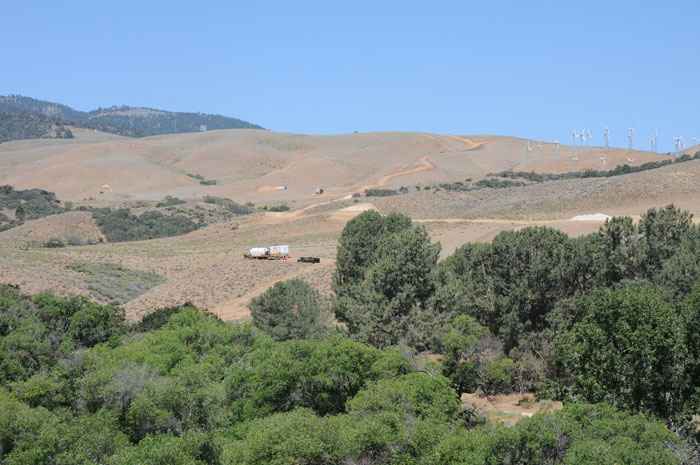
Wind projects encroach into wild grasslands full of wildflowers and rare plants.
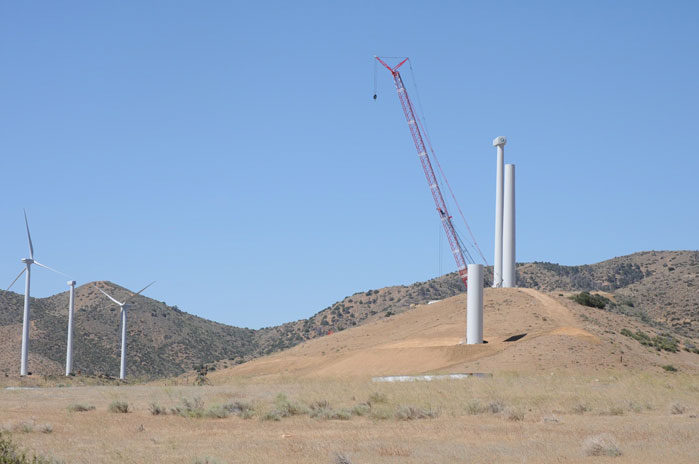
Towers and crane in grassland.
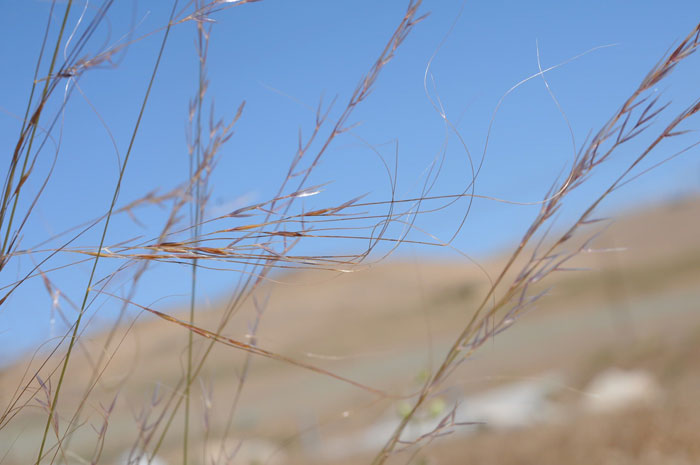
The Tehachapi Mountains have abundant native bunchgrasses such as this Nodding needlegrass (Stipa cernua).
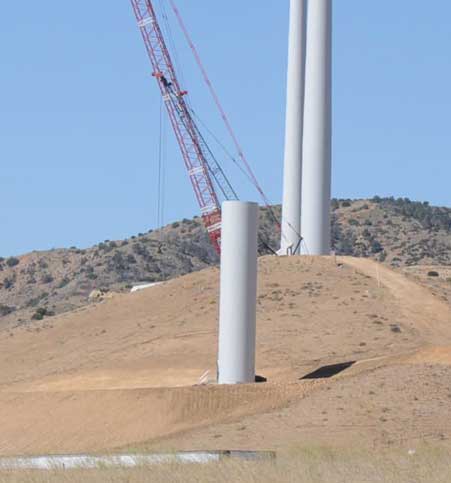
Enormous towers on pads cut into hill slopes.
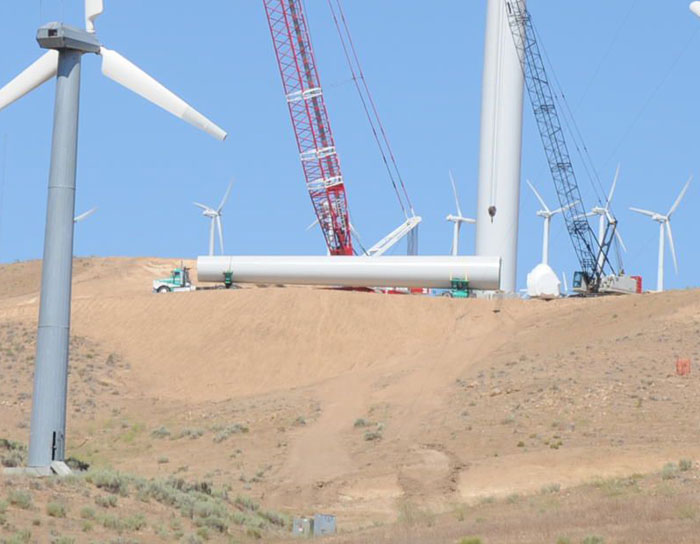
Over-sized truck with tower piece must access the hills.
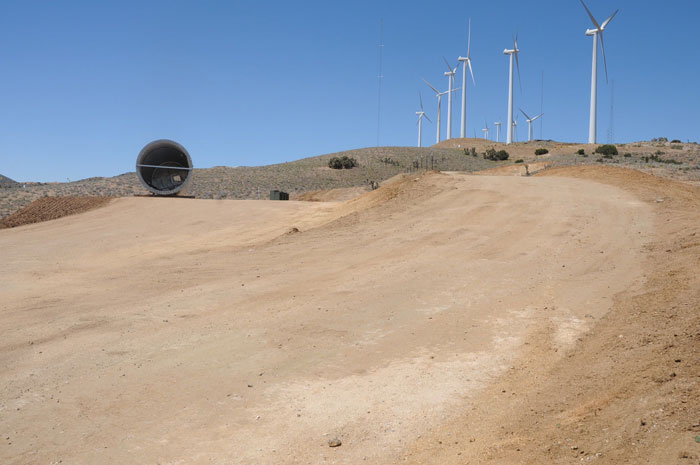
Roads and pads along ridge. The Pacific Crest Trail was diverted from this spot to go around the wind project.
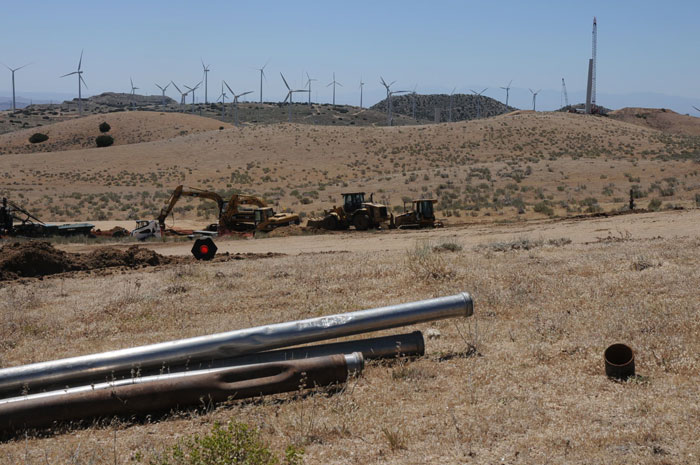
Wind project construction on once wild ridge.
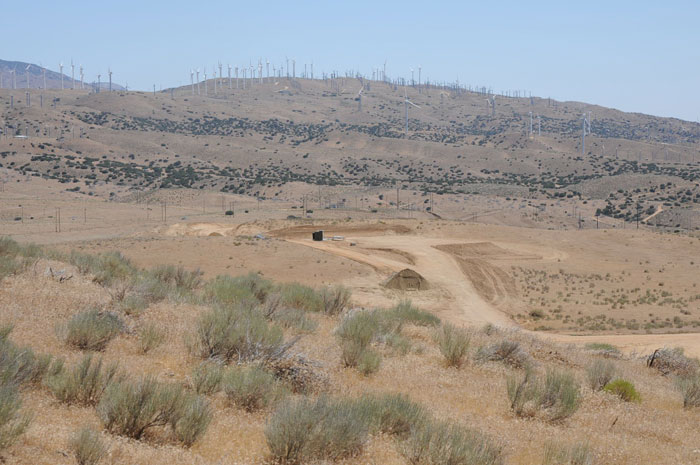
New pad and access road.
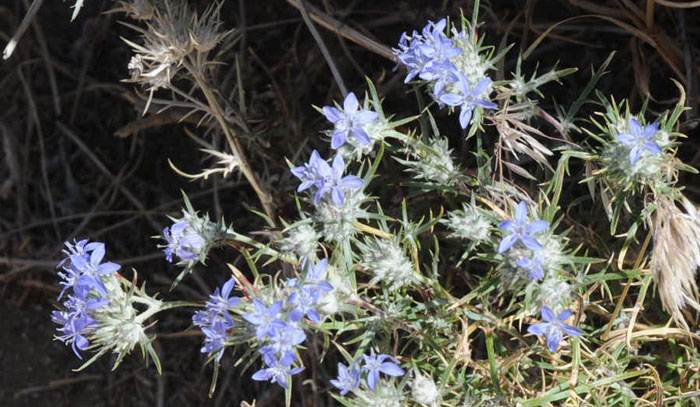
Native wildflowers bloom in summer here: Sapphire flower (Eriastrum eremicum).
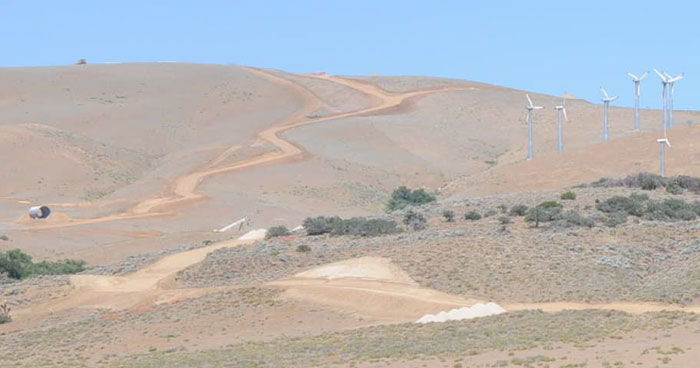
Roads and wind turbine pads scar the mountain and disturb habitat. Pronghorn antelope (Antilocapra americana) have been seen in these grasslands.
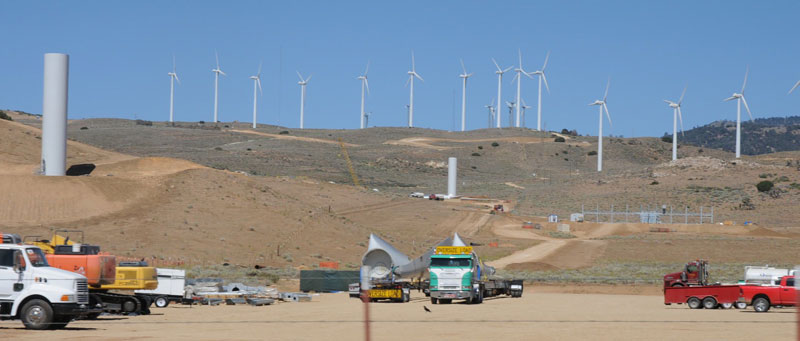
Wind project from central yard. Trucks parked carry single turbine blades.
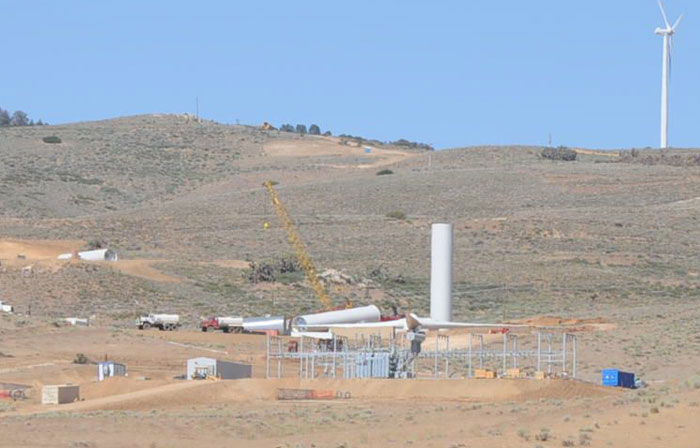
Construction.
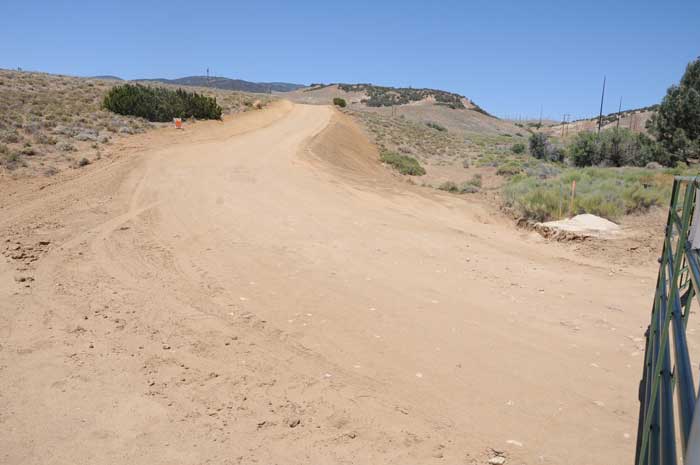
Wide entrance road from the paved highway, into the wind project site.
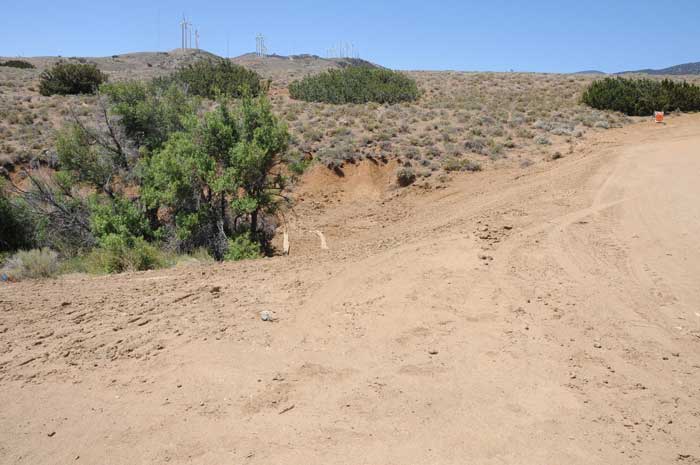
New wide road over a creek, with pipe for the water, and willows torn out.
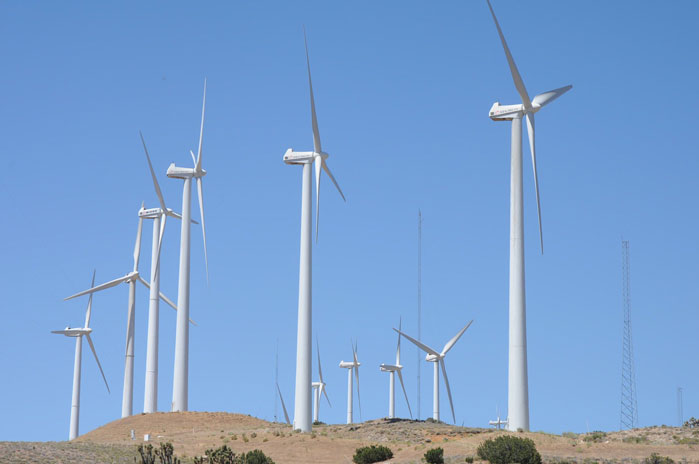
New turbines.
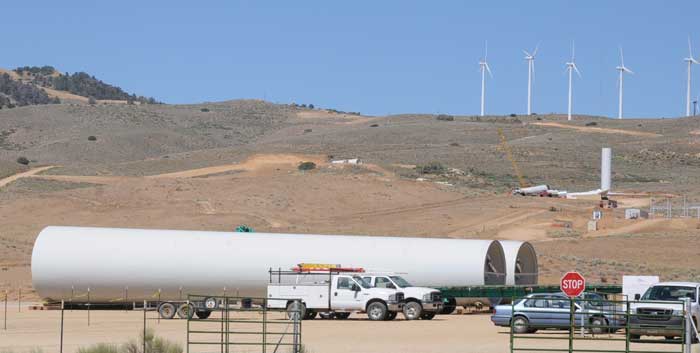
Tower sections in yard.
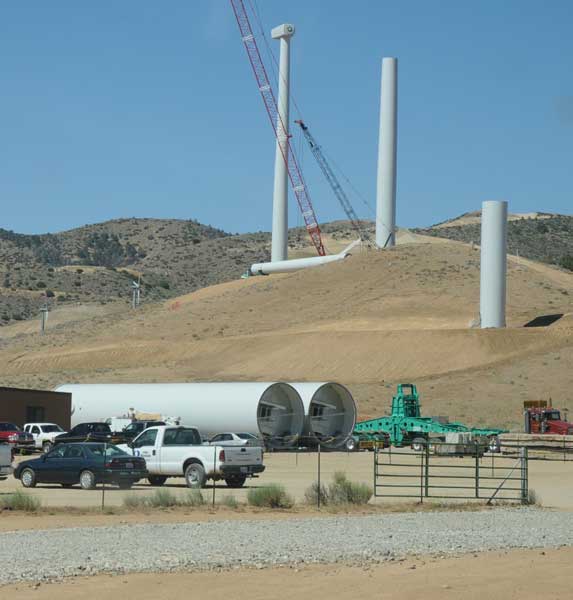
Yard and ongoing construction.
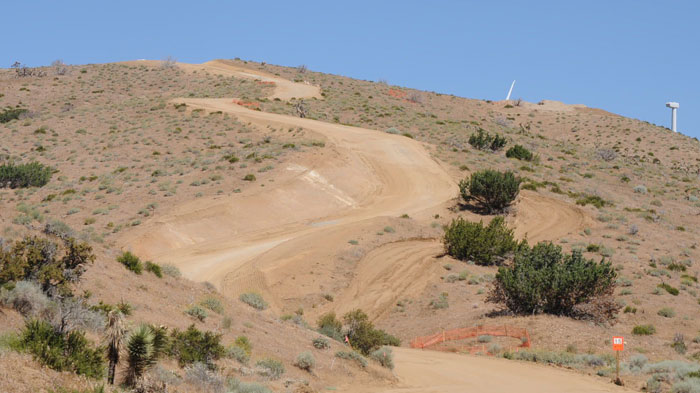
New road bulldozed into a desert grassland with junipers and Joshua trees.
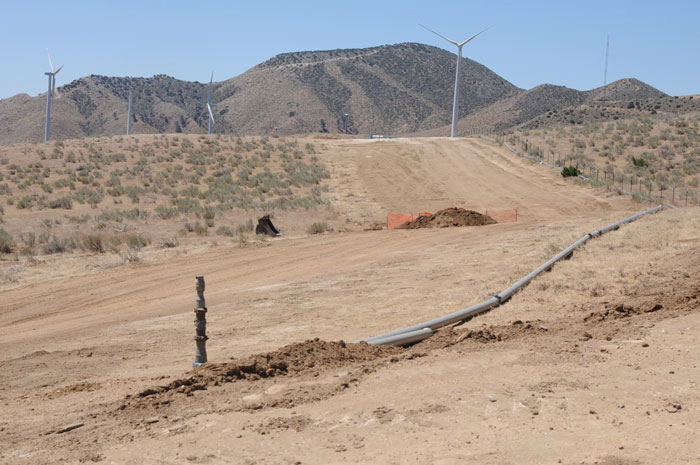
Buried line in the hills.
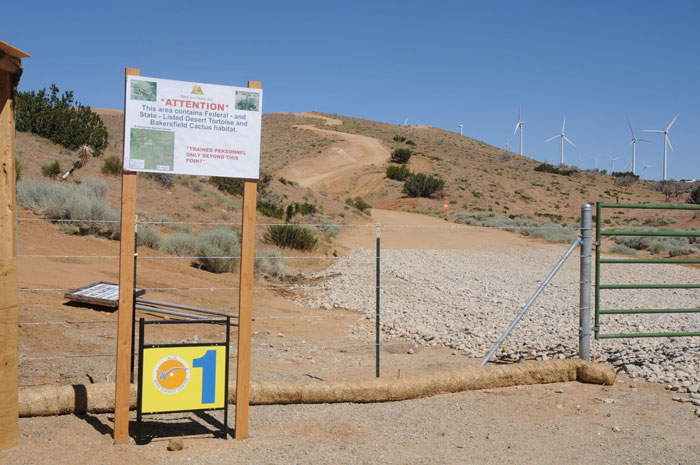
Entrance to wind project access road.
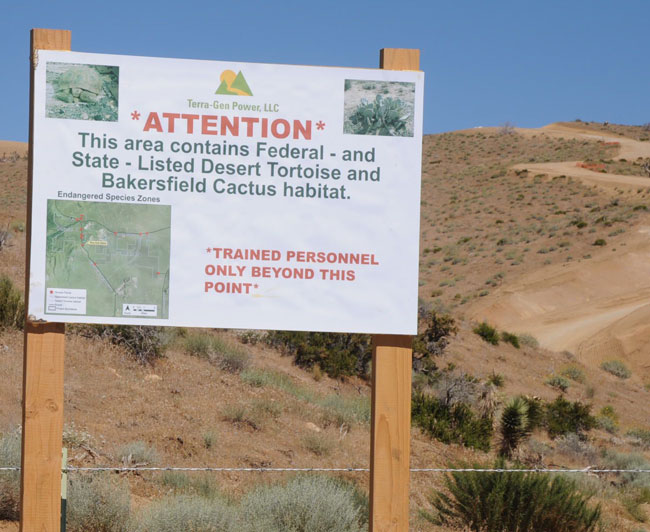
Transport
The wind turbine parts are huge. Over-size trucks need to transport them on wide roads.
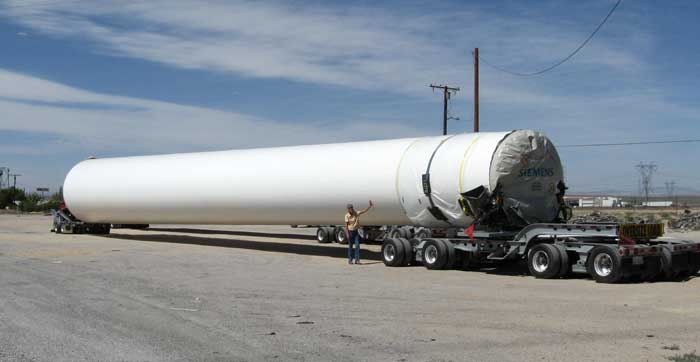
Part of a turbine tower, not the complete tower.
This material is the work of the author(s) indicated. Any opinions expressed in it are not necessarily those of National Wind Watch.
The copyright of this material resides with the author(s). As part of its noncommercial educational effort to present the environmental, social, scientific, and economic issues of large-scale wind power development to a global audience seeking such information, National Wind Watch endeavors to observe “fair use” as provided for in section 107 of U.S. Copyright Law and similar “fair dealing” provisions of the copyright laws of other nations. Queries e-mail.
| Wind Watch relies entirely on User Funding |
 (via Stripe) |
 (via Paypal) |
Share:
Tags: Wind power, Wind energy

